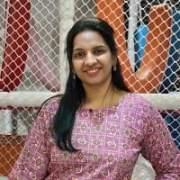

Splunk Observability Cloud and ServiceNow IT Operations Management compete in the IT monitoring and management space. ServiceNow seems to have an upper hand for organizations seeking comprehensive ITSM integration, while Splunk is favored for its real-time data analysis and monitoring capabilities.
Features: Splunk Observability Cloud provides robust data gathering and analysis features, customizable dashboards, and smooth integration with cloud environments for real-time monitoring. ServiceNow IT Operations Management offers advanced discovery and service mapping, seamless ITSM module integration, and comprehensive asset and event management for a unified platform.
Room for Improvement: Splunk could improve in scalability, affordability, platform integration, and user documentation. ServiceNow's areas for enhancement include service mapping, third-party tool integration, pricing, and initial setup complexity.
Ease of Deployment and Customer Service: Splunk supports deployments across on-premises, public cloud, and hybrid environments, with generally satisfactory customer support subject to variability. ServiceNow offers similar deployment flexibility and positive customer service, although guidance for non-standard configurations could be improved.
Pricing and ROI: Both Splunk and ServiceNow are on the expensive side but are recognized for providing strong ROI. Splunk's model helps manage costs during high data usage, while ServiceNow's comprehensive feature set provides competitive long-term value, especially for full-suite leveraging organizations.
It reduced staffing needs from four full-time staff to fewer due to automation.
Using Splunk has saved my organization about 30% of our budget compared to using multiple different monitoring products.
Anyone working in front-end management should recognize the market price to see the true value of end-user monitoring.
I have definitely seen a return on investment with Splunk Observability Cloud, particularly through how fast it has grown and how comfortable other teams are in relying on its outputs for monitoring and observability.
They respond promptly when we call to open a ticket.
For minor issues, the team takes a month's time to provide a fix.
The response time of technical support could be improved.
On a scale of 1 to 10, the customer service and technical support deserve a 10.
They have consistently helped us resolve any issues we've encountered.
They often require multiple questions, with five or six emails to get a response.
ServiceNow ITOM scales very well to small and medium businesses.
It integrates with every single tool, even external tools.
We've used the solution across more than 250 people, including engineers.
As we are a growing company transitioning all our applications to the cloud, and with the increasing number of cloud-native applications, Splunk Observability Cloud will help us achieve digital resiliency and reduce our mean time to resolution.
I would rate its scalability a nine out of ten.
Since it is a Platform as a Service (PaaS) or Software as a Service (SaaS) solution, I consider the stability to be very high, rating it ten out of ten.
It helps us create custom dashboards and provides excellent search functionality where we can search for any issues or errors that have occurred and take corrective action before it impacts the users.
I would rate its stability a nine out of ten.
We rarely have problems accessing the dashboard or the page.
Unlike NetScout or regular agents for APM, RUM has many problems during the POC phase because customer environments vary widely.
A more streamlined configuration process tailored to use cases and industry would be beneficial.
It provides many out-of-the-box functionalities along with customization options.
ServiceNow IT Operations Management is not very affordable for SMB customers.
The out-of-the-box customizable dashboards in Splunk Observability Cloud are very effective in showcasing IT performance to business leaders.
The next release of Splunk Observability Cloud should include a feature that makes it so that when looking at charts and dashboards, and also looking at one environment regardless of the product feature that you're in, APM, infrastructure, RUM, the environment that is chosen in the first location when you sign into Splunk Observability Cloud needs to stay persistent all the way through.
There is room for improvement in the alerting system, which is complicated and has less documentation available.
The pricing model offers scaling where not everything consumes a license equally, providing more value across different business areas.
ServiceNow's pricing is expensive.
It is definitely high-priced compared to other products available in the same domain in the market.
Splunk is a bit expensive since it charges based on the indexing rate of data.
It is expensive, especially when there are other vendors that offer something similar for much cheaper.
It appears to be expensive compared to competitors.
The performance analytics of ServiceNow was especially beneficial for setting thresholds, aggregating, and correlating infrastructure data.
ServiceNow IT Operations Management influences ITSM processes by automating them and aiding in detecting and resolving IT issues to improve performance, reliability, and uptime.
They provide seamless integration of ITOM with their other modules such as ITSM, where we can leverage the AIs for discovery, perform impact analysis, which essentially helps to enhance the overall IT operations and reduce the downtime and MTTR.
Splunk provides advanced notifications of roadblocks in the application, which helps us to improve and avoid impacts during high-volume days.
For troubleshooting, we can detect problems in seconds, which is particularly helpful for digital teams.
It offers unified visibility for logs, metrics, and traces.
| Product | Market Share (%) |
|---|---|
| Splunk Observability Cloud | 1.8% |
| ServiceNow IT Operations Management | 2.1% |
| Other | 96.1% |


| Company Size | Count |
|---|---|
| Small Business | 12 |
| Midsize Enterprise | 5 |
| Large Enterprise | 26 |
| Company Size | Count |
|---|---|
| Small Business | 20 |
| Midsize Enterprise | 10 |
| Large Enterprise | 43 |
ServiceNow IT Operations Management (ITOM) is a cloud management and infrastructure tool that facilitates the administrative and development process of creating, planning, and operating digital services, technology, application requirements, and components for organizations. Service Now ensures effectiveness, performance, and availability throughout an organization's processes and services.
ServiceNow ITOM will help organizations facilitate consistent policies with regard to deployment, support, and services to ensure trustworthiness and quality of service (QoS). ServiceNow ITOM will ensure that all applications, services, and infrastructure are consistently available and stable.
ServiceNow IT Operations Management Features
ServiceNow IT Operations Management Benefits
ServiceNow ITOM enables organizations to become robust, strategic operations able to successfully anticipate issues before they have an impact on the organization. Organizations that use ServiceNOw ITOM will be able to easily automate workflows and improve how their IT teams communicate and work together to deliver successful outcomes and maintain productivity and profitability 24/7.
Reviews from Real Users
“With this solution, operational costs will be reduced. Your maintenance cost will be reduced when you use the item model. You will deliver a fast solution to the customers. If something happens on the server-side or router-side, it will be immediately caught. Efficiencies are improved. “ - Rupesh J., Solutions Architect at Globant
“It has been very useful for tracking. It has evolved a lot over time, and there is a single pane of glass where you can track and see everything.” - Uday T., Project Manager at MindTree
Splunk Observability Cloud offers sophisticated log searching, data integration, and customizable dashboards. With rapid deployment and ease of use, this cloud service enhances monitoring capabilities across IT infrastructures for comprehensive end-to-end visibility.
Focused on enhancing performance management and security, Splunk Observability Cloud supports environments through its data visualization and analysis tools. Users appreciate its robust application performance monitoring and troubleshooting insights. However, improvements in integrations, interface customization, scalability, and automation are needed. Users find value in its capabilities for infrastructure and network monitoring, as well as log analytics, albeit cost considerations and better documentation are desired. Enhancements in real-time monitoring and network protection are also noted as areas for development.
What are the key features?In industries, Splunk Observability Cloud is implemented for security management by analyzing logs from detection systems, offering real-time alerts and troubleshooting for cloud-native applications. It is leveraged for machine data analysis, improving infrastructure visibility and supporting network and application performance management efforts.
We monitor all IT Infrastructure Monitoring reviews to prevent fraudulent reviews and keep review quality high. We do not post reviews by company employees or direct competitors. We validate each review for authenticity via cross-reference with LinkedIn, and personal follow-up with the reviewer when necessary.